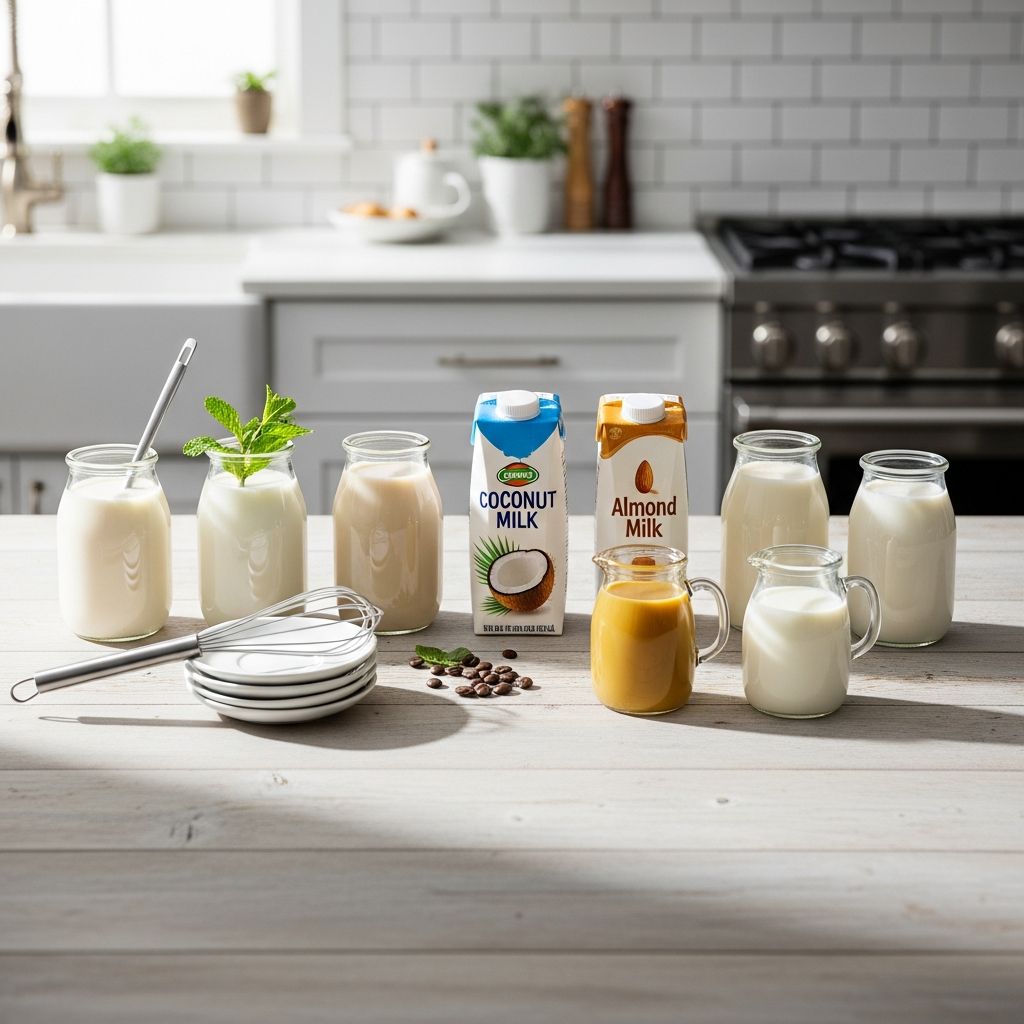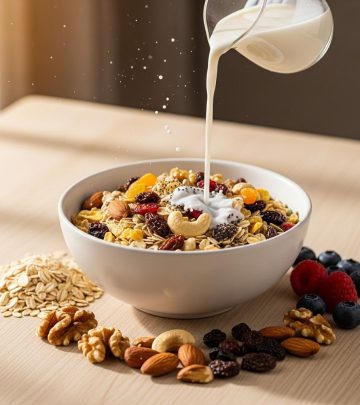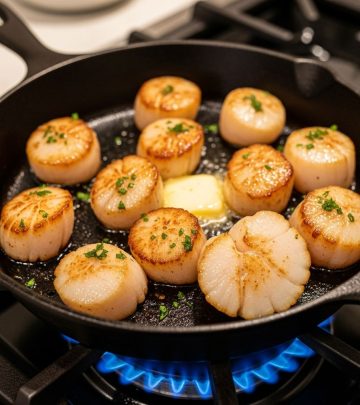The Best Half-and-Half Substitutes for Your Kitchen
Creative, reliable, and easy swaps for half-and-half using everyday ingredients and smart kitchen tips.

Half-and-half is a versatile staple in American kitchens, elevating everything from a morning cup of coffee to creamy mashed potatoes and rich desserts. But what happens when you reach for the carton, only to find it’s empty? Whether you’re in the middle of baking, making sauces, or simply want a rich addition to your beverage, plenty of clever substitutions await in your fridge or pantry. This guide explores what half-and-half is, why it’s so beloved, and the very best ways to replace it when you’re in a pinch.
Table of Contents
- What Is Half-and-Half?
- Top Half-and-Half Substitutes
- Other Ingredient Swaps
- How to Choose the Best Substitute
- Frequently Asked Questions (FAQs)
What Is Half-and-Half?
As its name suggests, half-and-half is a dairy product made by homogenizing equal parts whole milk and heavy cream. This blend gives it a milkfat content ranging from 10.5% to 18%, as per United States Department of Agriculture standards. It’s richer than milk but lighter than cream, offering a subtle creaminess without the heaviness. Unlike heavy cream, half-and-half can’t be whipped, but it beautifully enriches recipes and beverages.
- Fat content: 10.5–18% milkfat
- Texture: Thicker than milk, thinner than cream
- Uses: Coffee creamer, mashed potatoes, quiche, sauces, desserts, and more
Because of its balance, half-and-half is prized for striking a perfect middle ground—imparting body and flavor without overwhelming thickness or fat.
Top Half-and-Half Substitutes
No half-and-half? No problem. Kitchen creativity comes alive with several alternatives, whether you’re after a direct substitute or want to improvise with what’s on hand. Here are the best tried-and-true swaps:
1. Whole Milk + Heavy Cream
This is the gold standard for a half-and-half replacement. By adjusting the ratio, you replicate both the flavor and texture perfectly. Most cooks have these two in their fridge, making this substitute accessible and reliable.
- How to substitute: Combine 3/4 cup whole milk with 1/4 cup heavy cream to yield 1 cup of half-and-half.
- Best for: Coffee, sauces, custards, baking, soups
- Flavor/Texture: Virtually identical to commercial half-and-half
Use as a 1:1 replacement for any recipe calling for half-and-half—for beverages, baking, or savory cooking.
2. Milk + Light Cream
If you have light cream available, combine it with milk for another excellent stand-in. This mixture almost precisely replicates supermarket half-and-half but may be less common in home kitchens.
- How to substitute: Mix 1/2 cup milk with 1/2 cup light cream to yield 1 cup of half-and-half.
- Best for: Coffee, cream-based soups, sauces
- Flavor/Texture: Slightly richer than the first method
This is essentially the industry’s own formula. If both light cream and milk are available, use this blend for the closest match.
3. Low-Fat or Skim Milk + Heavy Cream
You can customize the fat content by using skim or low-fat milk with cream, a handy approach for those preferring something lighter but still with creamy character.
- How to substitute: Combine 2/3 cup low-fat milk with 1/3 cup heavy cream for 1 cup of half-and-half.
- Best for: Lightening up recipes without sacrificing too much creaminess
- Flavor/Texture: More subtle; less rich, but still creamy
This method allows for flexibility—simply adjust ratios to taste if you want your mixture richer or lighter.
4. Evaporated Milk
Evaporated milk makes a shelf-stable, highly convenient option. It has concentrated milkfat and proteins, giving it a similar creaminess to half-and-half without added ingredients.
- How to substitute: Use evaporated milk as a 1:1 substitute for half-and-half in recipes.
- Best for: Baking, sauces, custards, or any cooked dishes
- Flavor/Texture: Slight caramelized flavor; less fresh but still creamy
Evaporated milk is especially useful for recipes—not recommended for coffee or drinks due to its cooked taste.
Other Ingredient Swaps
While the above options are closest to traditional half-and-half, there are a few more creative (though less conventional) substitutes if you’re in a bind or catering to dietary restrictions. Note that these may alter the final flavor or texture of your recipe more noticeably.
- Melted Butter + Milk: Add 1 tablespoon melted butter to enough milk to make 1 cup. This increases the milk’s fat content, mimicking the richness of half-and-half. Especially good for baking.
- Greek Yogurt: Thin plain Greek yogurt with a bit of milk for a tangy, creamy half-and-half replacement—ideal for sauces, baking, or creamy salad dressings.
- Cornstarch + Milk: Stir 1 teaspoon cornstarch into 1 cup milk; gently heat and stir until slightly thickened. Useful for cooking or baking but not suited for coffee.
- Silken Tofu + Plant Milk (Vegan): Blend silken tofu with soy or oat milk for a vegan-friendly substitute (great for soups and sauces).
- Pureed Cashews + Water (Vegan): Soak and blend cashews with water to create a rich plant-based cream. Ideal for vegan or dairy-free recipes.
Note: These approaches are less standardized, so experiment with ratios and expect a bit more creativity. They’re best for cooking rather than stirring into drinks, where flavor differences become more apparent.
How to Choose the Best Substitute
The right substitute depends on your ingredients, recipe, and dietary needs. Here are factors to consider:
- For Coffee & Drinks: Stick with whole milk + cream or light cream blends. Greek yogurt or evaporated milk will taste and feel too different.
- For Baking: Any close dairy blend (milk + cream, evaporated milk, or milk + melted butter) works well since recipes tolerate slight changes in fat content.
- For Sauces & Soups: More flexibility! Try cashew or silken tofu mixtures for vegan options, or fat-adjusted dairy blends for lighter fare.
- For Healthier Eating: Skim milk + cream or milk thickened with a little cornstarch reduces fat and calories but keeps some creaminess.
| Substitute | Best For | Notes |
|---|---|---|
| Whole Milk + Heavy Cream | All Uses | Closest match; precise in flavor and texture |
| Milk + Light Cream | All Uses | Replicates standard commercial blend |
| Low-Fat Milk + Heavy Cream | Lighter, healthier recipes | Less rich, subtle flavor |
| Evaporated Milk | Baking, cooked dishes | Canned, long shelf life; slight caramel flavor |
| Melted Butter + Milk | Baking | Enhances fat content; can affect flavor |
| Greek Yogurt + Milk | Sauces, dressings, baking | Tangy, creamy, higher protein |
| Cornstarch + Milk | Cooking, thickening | Not suitable for beverages |
| Silken Tofu + Plant Milk | Vegan soups, sauces | Creamy, neutral flavor (experiment with ratios) |
| Pureed Cashews + Water | Dairy-free recipes | Rich texture; slightly nutty, works for vegan dishes |
Frequently Asked Questions (FAQs)
Q: Can I use just milk in place of half-and-half?
A: Milk alone won’t provide the same creamy texture or fat content as half-and-half, so results may be thinner and less rich. If possible, add a bit of butter or cream to compensate for missing fat.
Q: What’s the best nondairy substitute for half-and-half?
A: The best nondairy option is plant-based creamers available at grocery stores, or homemade blends like silken tofu with plant milk or blended cashews with water. Coconut milk or cream also works, but can impart a coconut flavor.
Q: Will evaporated milk taste the same as half-and-half?
A: Evaporated milk has a slightly caramelized or cooked flavor and may taste a bit different, especially in drinks. It works best in baked or cooked recipes where subtle differences are less pronounced.
Q: Can I use half-and-half instead of milk or cream in recipes?
A: Yes! Half-and-half can be swapped for milk (for richer results) or for cream (for lighter ones) in most recipes, but keep in mind it lacks the thickness of cream and won’t whip.
Q: Are substitutes healthy?
A: Most substitutes are similar to half-and-half in terms of calories and fat, especially if made with cream. Skim milk-based blends or plant milk alternatives will be lower in fat and calories, while additions like butter or cashews increase richness.
Q: What should I do if my substitute curdles in hot recipes?
A: To avoid curdling, warm your substitute before adding to hot dishes and add it gradually. Dairy and some plant milks can separate when shocked by high heat.
Tips for Success
- Blend your substitute thoroughly for best texture.
- Adjust the ratios to fit your taste or dietary needs.
- When in doubt, use whole milk plus a splash of cream for most versatility.
Get Creative—And Don’t Panic!
Half-and-half emergencies are easily solved with a bit of substitution savvy. Keep this guide handy the next time you run out, and transform your recipes with ease, resourcefulness, and plenty of kitchen confidence.












